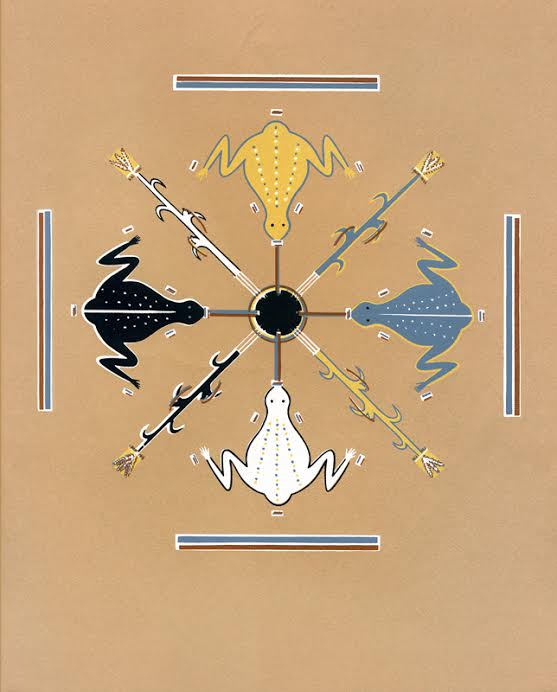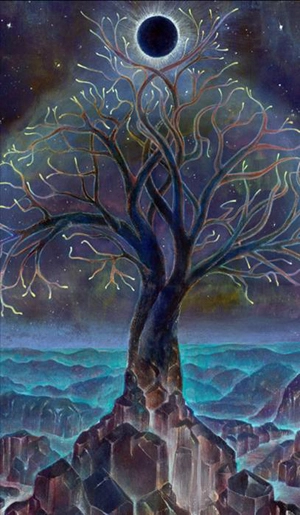ARAS Connections: Image and Archetype - 2012 Issue 4

As we close out 2012 and get ready to welcome in the New Year, ARAS has so much to celebrate that we want to share with you. Great things are happening at ARAS.
Over the past several months, we have been in discussions with ARTstor. ARTstor is a non-profit initiative, founded by The Andrew W. Mellon Foundation, with a mission to use digital technology to enhance scholarship, teaching, and learning in the arts and associated fields. ARTstor is a fabulous resource that has hundreds of thousands of digital images and related data, along with the tools to actively use those images.
ARAS is entering into a new relationship with ARTstor that will benefit both organizations without in any way altering the unique and separate identity of either one. In our new arrangement, ARAS subscribers will gain access to ARTstor's vast library of images and ARTstor will include ARAS' unique collection of images and commentary on archetypal symbolism in its prestigious selection of archival collections that are made available to non-profit institutions around the world. This relationship will unfold in two steps over the next year.
The first step, which we will be rolling out at the beginning of 2013, will enable all of the individual subscribers of ARAS Online to have free access to the vast resources of ARTstor. For licensing reasons, this privilege will only be available to individual subscribers to ARAS, not to institutional subscribers to ARAS. Of course, we hope this new ARAS access to ARTstor will be an incentive to those of you who enjoy receiving the free subscription to ARAS Connections to consider become paying subscribers to ARAS Online which will give you the huge bonus of having access to ARTstor.
The second phase of our new relationship with ARTstor will begin later in 2013 when all of the institutional subscribers to ARTstor will have access to ARAS Online. The ARAS approach to archetypal imagery is absolutely unique and we at ARAS have long sought a way in which to make our approach to images and symbols more accessible to a world of scholars, students, artists, and dreamers.
In addition to entering into a new relationship with ARTstor, ARAS Online is undertaking a major transformation of itself in terms of our front-end design (what you see and use) and our back-end technology (what makes what you see work). We first went to the drawing boards to plan the construction of ARAS Online in 2001 and launched the site in July, 2005. In the world of internet technology, a decade is as long as a century by any other historical measurement of time. In the past year, we have been planning our next ARAS Online incarnation in terms of its look and functionality. This will be unfolding in the coming year. Dyad Communications of Philadelphia, a design, company, is taking the lead in the front end transformation and John Kyle, a computer "guru", is creating the architecture for the back end which will tremendously enhance our ability to flexibly organize, search and expand our core content.
Perhaps there is no better way to celebrate these creative developments in ARAS' relationship to the world and its own evolution than with an issue of ARAS Connections devoted to exploring the relationship between poetry and imagery in two original articles--one, the Poetry Portal, a new feature of ARAS Online curated by Ellen Liberatori, and the other, a beautiful, timely exploration of the personal and political, the individual and archetypal by Naomi Lowinsky.
Tom Singer, M.D.
Co-Chair of ARAS Online for National ARAS
Clinging to the Axis Mundi: The Poetry of Politics

Naomi Lowinsky is a Jungian analyst, poet, and teacher. She practices in the San Francisco Bay Areas; her poetry and other writings have been published in many books, including The Sister from Below: When the Muse Gets Her Way, Adagio and Lamentation, red clay is talking, and Motherline. For many years, Naomi has taught Deep River: Writing as a Spiritual Practice and most recently, she presented this paper at a pre-presidential election conference, The Citizen's Dilemma: Four Voices, at the C.G. Jung Institute of San Francisco
Introduction
Writing poetry is an essential and organic process for me. Jung writes "The creative urge lives and grows… like a tree in the earth" (CW V. 15, par 115). I know that feeling. Writing poetry is how I plant myself on earth. The leap of associations from conscious mind to unconscious and back that is the magic of a poem is how I find my way back to the center, to the archetype of orientation—the Axis Mundi—which we recognize in many forms, among them— the Tree of Life or World Tree, the Seven Chakras, the Motherline, the ladder between the worlds, the sacred mountain, that old black magic that connects us to the cosmos, whose wisdom goes back to the origins of our kind. I believe it is the essential work of poetry to reach back to the roots of human consciousness and retrieve our collective soul. I believe poetry is a way to bring ourselves back into relation with our old black magic—the sun, moon and stars, animals, plants, ancestors—the Axis Mundi.
The great ash tree that holds together earth, heaven, and hell by its roots and branches in Norse mythology.
But how can poetry respond to the rancor, the bitterness, the extremism, the climate change deniers, the New Deal dismantlers, the Women’s Rights plunderers, the hellish intensity of our collective moment? Poetry is no more than the flap of a butterfly’s wings, the dart of a hummingbird—a strophe flung into the roar of the mob. Poetry does so little, dares so much. Poetry is the prophet down from the mountain, a gadfly on the body politic, a witness to the desecration; poetry sings our cultural myths, mourns what’s been lost, praises the newborn day.
When the political leaps into my poems I am surprised and actually, grateful. As an introvert I mostly meet my muse in inner worlds. But sometimes she startles me with some iconic collective image, or jumps on me with fierce associations to the news of the day. Disturbing as the news may be such visitations from external reality feel numinous and strangely orienting. Something shifts in the imaginal realm. My spirit settles down; my soul finds the stairway between worlds.
I have chosen five poems that take very different slants on the political. I’ll introduce the poem, then present it, accompanied by its images, and muse about it.
Read Clinging to the Axis Mundi: The Poetry of Politics in its entirety.
Become a Member of ARAS!
Become a member of ARAS Online and you'll receive free, unlimited use of the entire archive of 17,000 images and 20,000 pages of commentary any time you wish—at home, in your office, or wherever you take your computer.
The entire contents of three magnificent ARAS books: An Encyclopedia of Archetypal Symbolism, The Body and The Book of Symbols are included in the archive. These books cost $330 when purchased on their own.
You can join ARAS Online instantly and search the archive immediately. If you have questions, please call (212) 697-3480 or email info@aras.org
We Value Your Ideas
As our newsletter grows to cover both the ARAS archive and the broad world of art and psyche, we're eager to have your suggestions and thoughts on how to improve it. Please send your comments to info@aras.org. We look forward to your input and will reply to every message.
Subscribe
If you're not already a subscriber and would like to receive subsequent issues of this newsletter by email at no cost, e-mail us at newsletter@aras.org.
